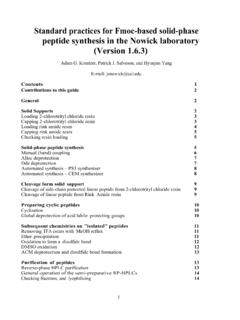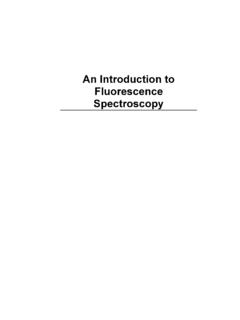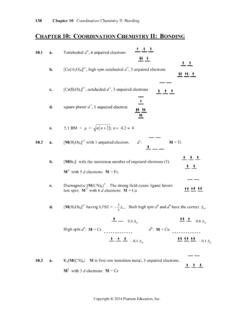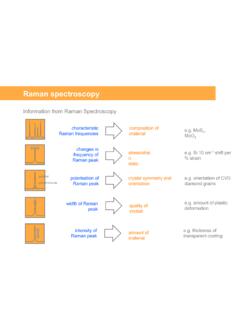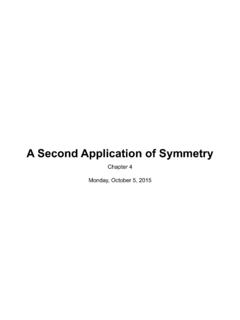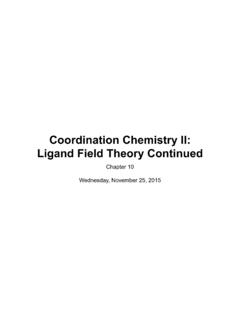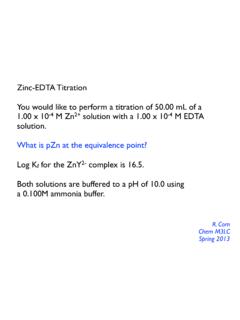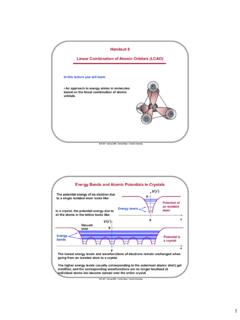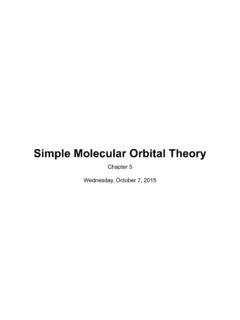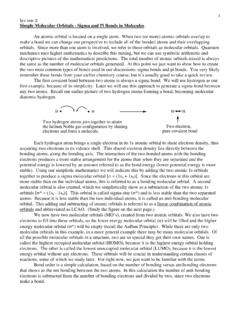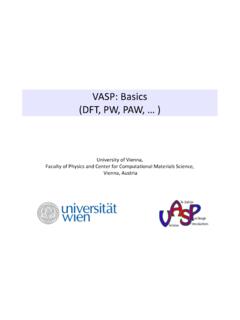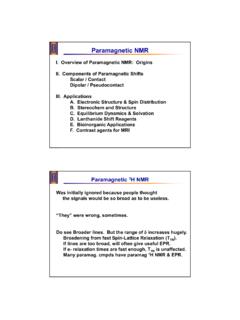Transcription of MO Diagrams for Diatomic Molecules
1 MO Diagrams for Diatomic MoleculesChapter 5 Friday, October 9, 2015 Homonuclear Diatomic MoleculesWhat happens when we move to more complicated systems? Consider O2. The Lewis dot structure famously predicts the wrong electronic structure for O2 We can use LCAO-MO theory to get a better picture:2sa2pa2sb2pbNotice that E > E ,because the bonds have more overlap than bondsE E Electron Configurations and Bond OrdersJust as with atoms, we can write a molecular electron configuration for O2 2 *2 2 4 *2We can also calculate the O O bond order:BO 12# bonding e # anti-bonding e 128 4 2 LCAO MO theory also predicts (correctly) that O2has two unpaired MixingOrbitals of similar but unequal energies can interact if they have the same symmetryThe 2sand 2pzorbitals form MOs with the same symmetry ( g and u). sp mixingcauses the g and u MOs to be pushed apart in energy: The and orbitals change order!
2 Orbital MixingThe size of the effect depends on the 2s-2p energy Zeff=small energy difference = large spmixinglarge Zeff=large energy difference = small spmixingorder changesMOs of Homonuclear Diatomic MoleculesThe MO picture of homonuclear Diatomic Molecules depends on the amount of , F2, Ne2Li2, Be2, B2, C2, N2 Bond Order and Bond DistanceThe MO bond order is the main factor controlling the 2 *2 2BO = 1C2 2 *2 4BO = 2N2 2 *2 4 2BO = 3O2 2 *2 2 4 *2BO = 2F2 2 *2 2 4 *4BO = 1O2 2 *2 2 4 *3BO = + 2 *2 2 4 *1BO = + 2 *2 4 1BO = 2 *2 4 2BO = 3 Relative AO Energies for MO DiagramsPhotoelectron spectroscopygives us a pretty good idea of the relative energies for eV eV eVnbMO Diagram for HFThe AO energies suggest that the 1sorbital of hydrogen interacts mostly with a 2porbital of fluorine. The F 2sis Fnb *EnergyH eV1sF eV eV2s2pSo H F has one bond and three lone electron pairs on fluorineRelative AO Energies for MO DiagramsHHeLiBeBCNOFNeBCNOFNeNaMgAlSiPSC lArAlSiPSClAr1s2s2p3s3p eV eV eV eVPhotoelectron spectroscopygives us a pretty good idea of the relative energies for Diatomic Molecules : COIn Molecules with more than one type of atom, MOs are formed from AOs that have different energies.
3 Consider CO:2sa2paC2sb2pbOC O * * *Bonding orbitals get polarized towards oxygenAnti-bonding orbitals get polarized towards carbonHOMO is on carbonLUMO is on carbon too!SummaryMO Theory LCAO-MO Theory is a simple method for predicting the approximate electronic structure of Molecules . Atomic orbitals must have the proper symmetry and energy to interact and form molecular orbitals. Photoelectron spectroscopy provides useful information on the energies of atomic orbitals. Next we ll see that symmetry will help us treat larger Molecules in the LCAO-MO theory framework.
